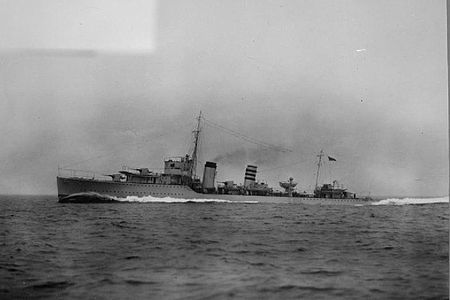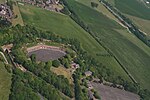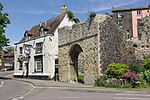HMS Codrington
1929 shipsA- and B-class destroyersDestroyers sunk by aircraftEngvarB from August 2014Maritime incidents in July 1940 ... and 6 more
Military history of Dover, KentShips built by Swan HunterShips built on the River TyneShips sunk by German aircraftWorld War II destroyers of the United KingdomWorld War II shipwrecks in the English Channel

HMS Codrington was one of nine A-class destroyers built for the Royal Navy during the 1920s. She was the flotilla leader for the class. During the Second World War she served in Home waters and off the Norwegian coast, before being bombed and sunk on 27 July 1940 whilst in dock at Dover.
Excerpt from the Wikipedia article HMS Codrington (License: CC BY-SA 3.0, Authors, Images).HMS Codrington
140,
Geographical coordinates (GPS) Address Nearby Places Show on map
Geographical coordinates (GPS)
| Latitude | Longitude |
|---|---|
| N 51.125555555556 ° | E 1.3344444444444 ° |
Address
140
CT16 1JA , Dover
England, United Kingdom
Open on Google Maps








